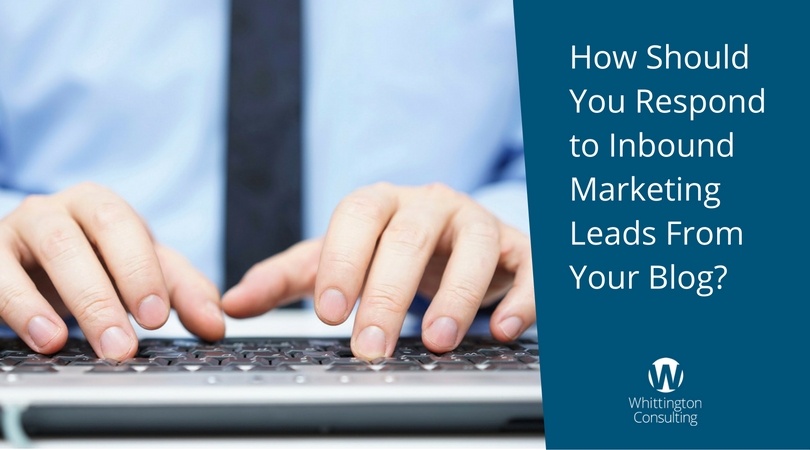Digital marketing is helping many businesses deliver more inbound marketing leads. In fact, 89 percent of companies using content marketing say it works for them, generating higher quality leads more quickly and less expensively than traditional marketing efforts.
But here’s an interesting situation that comes up for many niche B2B companies that start blogging regularly. People contact you after identifying with something you wrote. Readers start to leave comments and questions that aren’t direct sales inquiries but represent a certain level of interest and opportunity.
So, what do you do about it? Get a sales rep on the lead ASAP? Thank them for the comment or for connecting and leave it there? Or do you ignore the comment and hope the customer takes the next step and reaches out to your sales rep?
If you’re not sure how to take a lukewarm conversation or sales trigger to the next level, here’s how. Let’s take a look at how to respond to inbound marketing leads that come specifically from the blog on your company’s website.
Be Helpful First
Sales has gone through a critical shift in the last 10 years. Traditional tactics still have their place, but instead of expensive marketing placements and hard-hitting advertisements, niche B2B companies are increasingly using their websites to draw customers in and establish a relationship. That’s why when an inbound marketing lead leaves a comment on your blog, your first priority is not to sell but to help.
Creating relationships with customers requires a give and take of information and support. When you give in the form of advice and insights, your prospects feel like you have invested in them and they are motivated to stay engaged out of a sense of reciprocity.
Avoid the Hard Sell
It may be counterintuitive in your industry, but hand in hand with being helpful first is avoiding the hard sell. When a customer leaves a comment or a question on your blog, just posting, "Great question. Email me at Sales@Company.com if you want to hear more about this product," it shifts that conversation from being mutual to transactional.
The purpose of your blog is to educate and increase interest, not to close deals. When people leave comments on your blog, make sure you meet the need of the reader (an answer to a question or your advice) rather than your need to sell a product or service. Always work to answer the question in a helpful and educational way, and then provide a follow up address in case the client wants to hear more.
Use the Information
Just because you aren’t jumping on this opportunity to make an immediate sale doesn’t mean an inbound marketing lead is not immediately valuable. When a customer interacts with your content, treat it as a conversation starter. You can also use that feedback to inform the profiles of your ideal customer and other marketing efforts.
For example, a blog post that is read frequently, receives comments from your target audience or has a higher click rate when sent to your email list is a blog post that has resonated with your audience. Take that as an invitation to dive deeper into that topic in a white paper or premium content download, and then follow up with the readers who took action on the blog post. In the same way, you can use a lack of popularity of certain blog post topics to decide to edit, delete, or reposition the post to be more applicable to your audience.
If you want to benefit from inbound marketing leads from your blog, you must change your mindset. While your ultimate goal is to sell a higher volume of products or services, the immediate goal is to create and maintain relationships with your customers and prospects. Use these tips to get into that mindset and make the most of inbound marketing leads that come through your blog.
Are you thinking, "this is all great, but we're not getting leads from our blog?" If so, our team can help. Let us show you how we've done it for companies like yours. Get started here.









